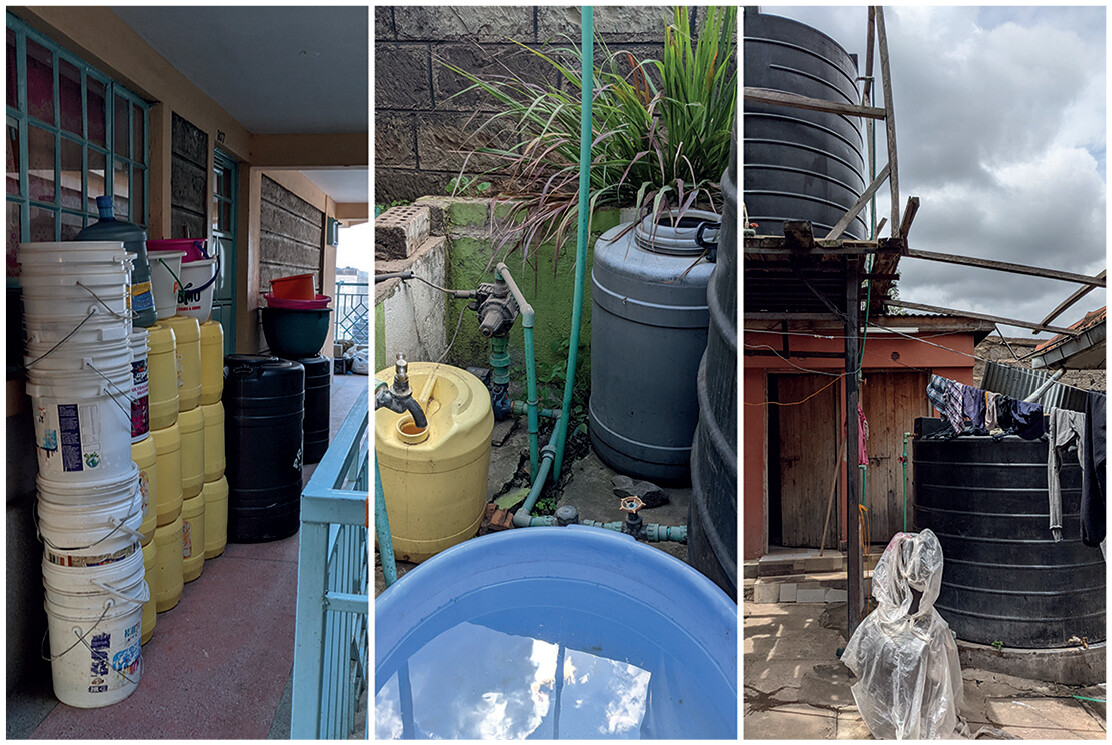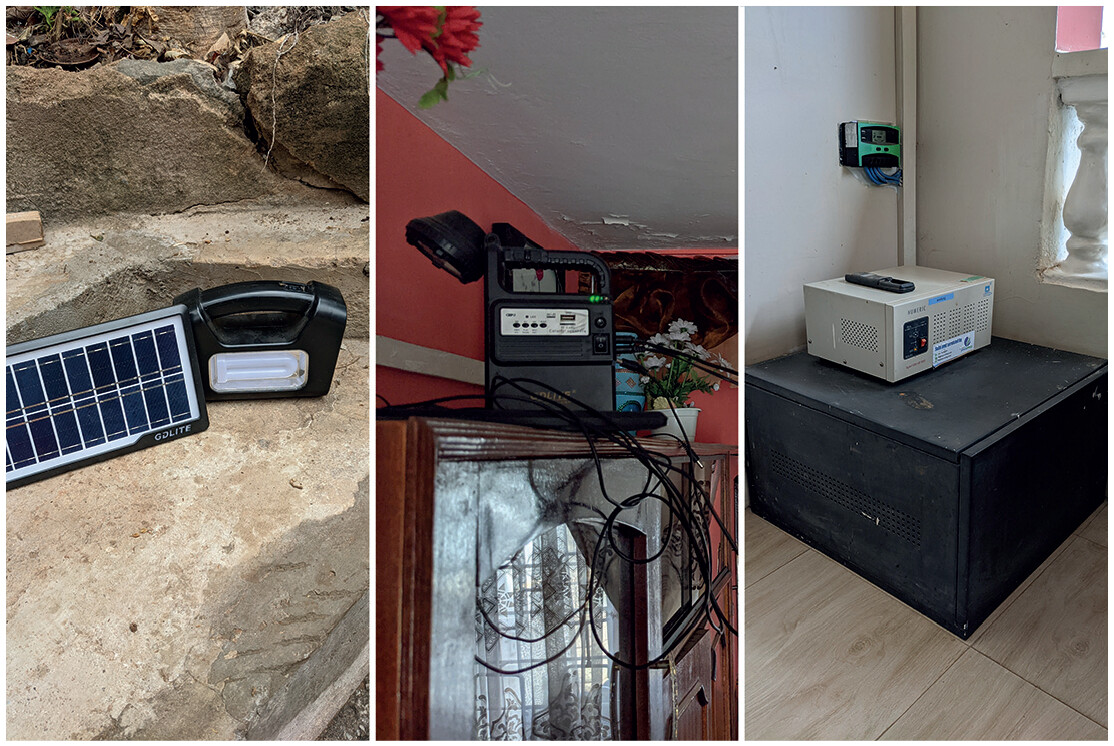Storage as infrastructure: Water and electricity storage by households in Nairobi
Blog post by Moritz Kasper
- Created
- 2 Feb 2023, 12:53 p.m.
- Author
- Moritz Kasper

Figure 1: Water storage items in Pipeline, Buru Buru and Ongata Rongai, from left to right (Moritz Kasper, 2021/22)
A few years back, stuck in Nairobi’s infamous rush hour, I gaze through the window of the barely moving car. A woman carries two jerry cans across the street, filled to the brim with water. ‘This whole city just runs on containers’, I think to myself, not knowing how much this specific moment will shape my future work and thinking on urban infrastructures.
For quite some time, infrastructures have been on the forefront of urban research, practice, and politics, specifically so-called distributive infrastructures: transport, water systems, power supply, data cables, etc. Unsurprisingly so, infrastructures are largely conceptualised through flows, circulations, or other kinds of movement - or the lack or fragmentation thereof. As fitting as these infrastructural notions are, they tend to neglect the moments and spaces of non-movement, when and where resources – such as water and electricity – are not flowing but are actually contained or stored.
Inspired by a jerry-can-carrying woman and based on research in the wider Nairobi area in 2021/22, in our latest paper, Sophie Schramm and I explore the prevalence, typologies and importance of domestic storage of water and electricity. For this, we deliberately focus on the domestic space – the household – to re-imagine infrastructures through storage and storage as infrastructure.
As much of urban Africa, Nairobi has always been shaped by infrastructural heterogeneity and inequality. To access basic services and resources many residents of today rely on a mix of public and private, networked and non-networked supply modes. Think of piped water and water delivery services, or the electricity grid and individual solar-powered devices. Amidst this heterogeneity, residents face shortcomings of networked infrastructures: lack of connections, low pressures or voltages, planned and unplanned outages. In response, Nairobians ensure the availability of electricity, water and other resources through storage containers and practices.
Faced with missing or failing connections to the city’s water network, exacerbated by a long-standing and unreliable rationing programme, virtually every household in Nairobi relies on domestic water storage with jerry cans, water tanks, and various other containers. Usually made of yellow plastic, jerry cans fill all kinds of domestic spaces, common areas, and even public spaces across the city. Jerry cans and the diverse practices they require have become crucial infrastructures to ensure water availability, as have large-scale water tanks usually made of polyethylene, which plaster yards and rooftops. Each household has a very specific storage arrangement with varying sizes and numbers of containers, potential connections to external tanks, responsibilities for filling and cleaning of containers, different water sources, etc. The prevalence and diversity of water storage shows how it has become a nearly unifying feature of Nairobi’s urban-infrastructural lives.
In comparison to water, Nairobi’s power supply is not as uneven and heterogeneous, and there is abundant electricity generation in Kenya. Yet, they city experiences about 90,000 power cuts per year. Hence, Nairobians across the city are always working towards electricity security, e.g. by storing it. Beyond phone and laptop batteries, all kinds of households own rechargeable lamps, or even lightbulbs with built-in batteries. Some households in affluent areas even use in-home battery systems, which – in case of an outage – power basic appliances. A recent surge in individual solar systems necessitates similar technologies. Batteries and the various practices they require are either enabling everyday life amidst an erratic network or are a necessity for off-grid supply modes.
When we acknowledge the infrastructural importance of domestic storage – across two infrastructures and with its mundane containers and everyday practices, such as carrying jerry cans across the street – we must also recognise it as a defining feature of 21st century urbanism. Not only resonate our impressions and findings from Nairobi with many urban spaces in the global south that also ‘run on containers’. More so, deteriorating infrastructures, geopolitical energy crises, climate change inter alia are likely to increase the scope and prevalence of domestic storage across the globe in coming years.
However, thinking infrastructures through storage should not stop at the theoretical or conceptual level. Ultimately, we must ask how we can utilise domestic storage for a more equal provision, availability and accessibility of basic resources. How can we move from highly individualistic forms of storage to arrangements that are more communal? How can storage evolve from a reactive phenomenon towards a progressive feature of infrastructural possibilities in 21st century urbanism?
Read the accompanying article on Urban Studies OnlineFirst here.

Figure 2: Electricity storage items in Eastleigh, Buru Buru and Ongata Rongai, from left to right (Moritz Kasper, 2021/22)


Comments
You need to be logged in to make a comment. Please Login or Register
There are no comments on this resource.